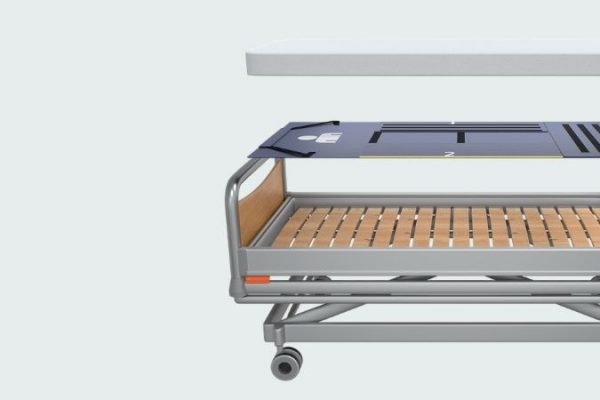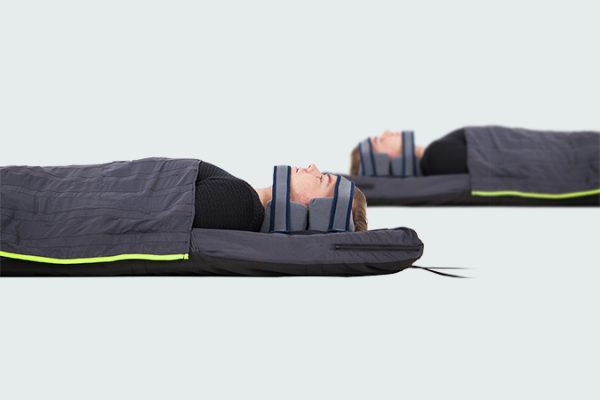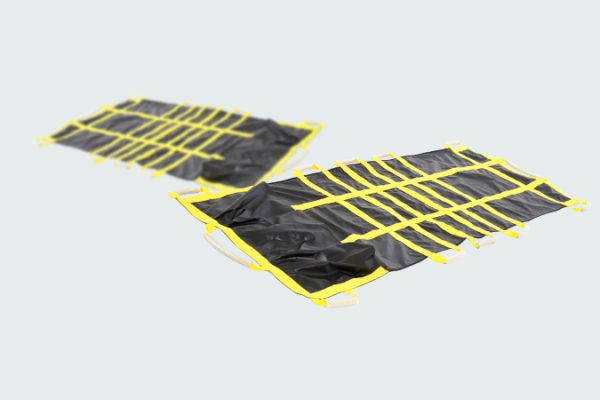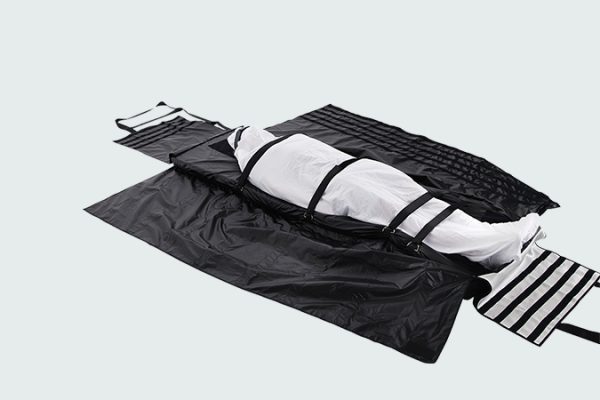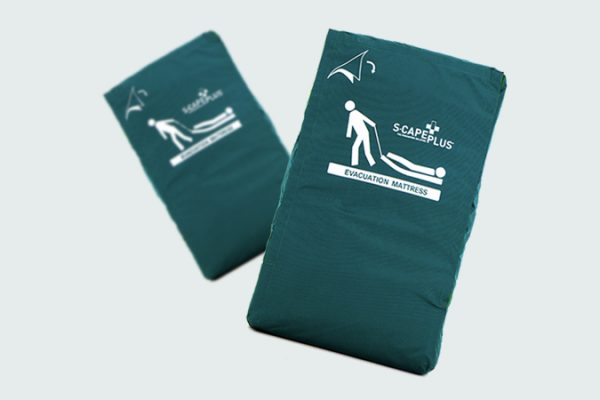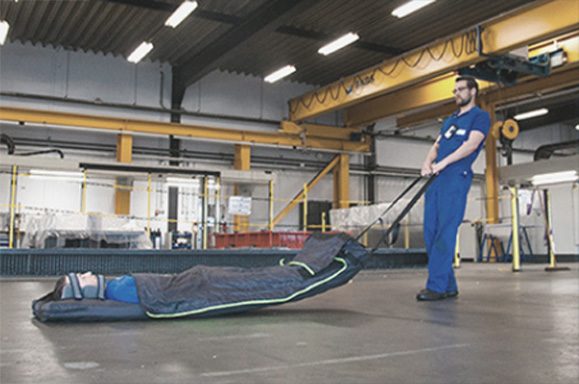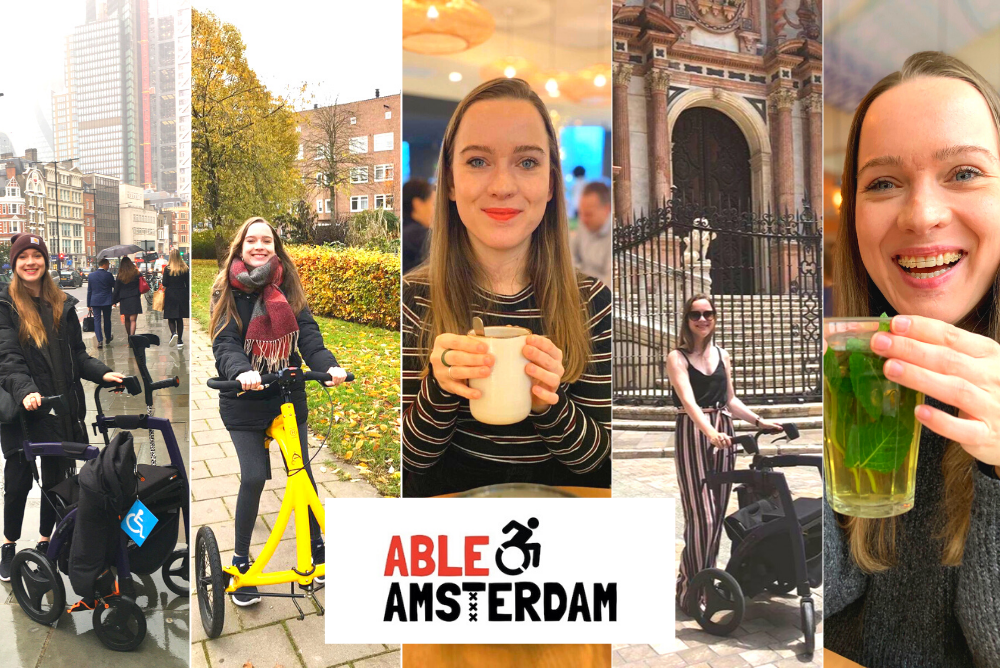Hey everyone, we had the opportunity to sit down with Josephine Rees from Able Amsterdam and talk about accessibility and exitability for people with reduced mobility. If you are an employer, health and safety expert, building owner, disability consultant or simply interested in the subject of accessibility, this is a must-read. Check out the interview below and learn more about what you can improve to create a more inclusive organisation for visitors and co-workers.
Josephine, would you mind introducing yourself?
“My name is Josephine, I am Dutch-British and 26 years old. I was born in Japan and raised in Tokyo and Moscow. In 2012 I moved back to my “roots” in The Netherlands to attend University College Utrecht, graduating with a degree in Anthropology and Human Geography. After a brief period living in Thailand and Cambodia, I’m now based in Amsterdam.”
Why did you start Able Amsterdam?
“I started Able Amsterdam because I wanted to bridge a gap in accessibility information and help people with reduced mobility to get the most out of this exciting city.
Indirectly it all started after I survived a life-threatening traffic accident back in 2017. Amongst other injuries, my right leg was completely crushed – affecting my mobility to this day. Thankfully various mobility aids have since helped me to regain a certain level of mobility and independence.
A year into my recovery I moved to Amsterdam. I was excited to explore my new home, but quickly realised many places around me were inaccessible. A lack of wheelchair-friendly toilets, entrances without a ramp, narrow doorways, and multi-storey buildings without lifts, to name a few – all of which limited my ability to enjoy what Amsterdam has to offer. Existing accessibility information was scattered across various websites. Often advice was unreliable due to a misconception of what “wheelchair-friendly” means. English-language resources were also especially scarce.
I’d hoped to find a reliable database about accessible places in Amsterdam. It didn’t exist yet, so I thought, ‘Why not start something myself?’
How does Able Amsterdam contribute to a more accessible world for people with reduced mobility?
“Firstly, Able Amsterdam contributes by collecting accessibility information and making it available to the people that need it. By providing first-hand recommendations, I aim to make things as enjoyable as possible for anyone visiting or living in Amsterdam. Able Amsterdam also contributes through blog– and social media posts highlighting what makes a place wheelchair-friendly. I write these posts to help readers understand concrete steps that can be taken towards better accessibility. Interestingly, my most-read blog post to date is about the “features of a wheelchair-friendly loo”! Lastly, Able Amsterdam contributes by providing accessibility feedback to restaurants, hotels, and museums around Amsterdam.”
How do organisations react when they are not or less accessible for people with reduced mobility? Do they take action according to the feedback that’s been given? If yes, what kind of time frame?
“The reaction to my accessibility feedback has been varied, but overwhelmingly positive. Several restaurants and hotels have taken my suggestions seriously and implemented changes. Juniper & Kin installed a ramp; The Birdhouse moved their paper towel dispenser within reach for wheelchair users; Barca improved their toilet’s soap, hand towels and lighting; and Van der Valk Amsterdam-Amstel lowered mirrors and coat hooks in their accessible rooms. Sometimes it takes weeks, sometimes it takes months, depending on the adjustment. I have yet to see a total renovation but I’m hopeful that day will come! Of course, some establishments like Foam Photography Museum or the Anne Frank House are located in historic buildings, meaning certain adjustments are difficult to make while still abiding by regulations for protected buildings. In those cases, staff still try to be as helpful as possible.”
We have the feeling that the accessibility cause is gaining momentum. What are your thoughts on this? What has improved over the years?
“Because my understanding of accessibility challenges only started a couple of years ago, I find it hard to say if things are improving at a faster rate than before. On the one hand, I’ve noticed some promising strides towards greater awareness and inclusivity. Just last year, for example, The Netherlands elected Rick Brink as its first unofficial “Minister van Gehandicaptenzaken” or “Minister of Disability Affairs”. The Dutch Railway System (NS) also recently launched a new generation of trains that include wheelchair-friendly toilets. On the other hand, we seem to be taking two steps back. Just last week, 6 new pedestrian bridges were installed in Leiden’s Singel Park. Two are completely inaccessible, with steps up and down.” I’ve also seen plenty of newly renovated restaurants in modern buildings lacking in basic accessibility features.”
In 2020 I can’t believe establishments in The Netherlands are still allowed to build new structures with no regard for people with reduced mobility. This will continue to happen as long as our government fails to implement strict nationwide accessibility regulations.
How’s that in comparison with ‘exitability’? (i.e. ensuring a quick escape for people with reduced mobility)?
“Given the number of public places in The Netherlands that are still lacking in adequate accessibility features, I have no doubt an equal amount of attention is still needed towards exitability. Having said that, I’m sure the widespread social media outreach of companies like Tetcon can be instrumental in spreading awareness about the importance of quick and safe evacuations for people with reduced mobility.”
What are your personal experiences with exitability?
“Fortunately, I have not yet been in an emergency situation where I’ve had to be evacuated. However, I have become acutely aware of exitability now that I am working in a multi-storey building. Together with my employer we have had to come up with a strategy to ensure that I can be quickly and safely evacuated.”
If you’re in a multi-storey building, what are the evacuation challenges if you have a mobility impairment (temporary or permanent)?
“In the event of a fire, earthquake or other emergency you’re prohibited from using the lift. This poses a potentially life-threatening obstacle for anyone who is unable to walk down the stairs. As someone with reduced mobility, I’d be entirely reliant on the help of others to make it down to the ground floor. I’d also have to hope there is someone around who can carry my weight without falling, causing injury, and putting us both at further risk. That’s why inventions like the evacuation mattress are so important.”
Would you be able to test one of the evacuation mattresses? For example, the S-CAPEPLUS Basic Model?
“Yes, I’d love to!”
—
Based on this interview, we will meet with Able Amsterdam to test the S-CAPEPLUS Basic Model. A review of this test will be published on the Able Amsterdam website. For more information about Tetcon’s range of evacuation equipment, please click here.

